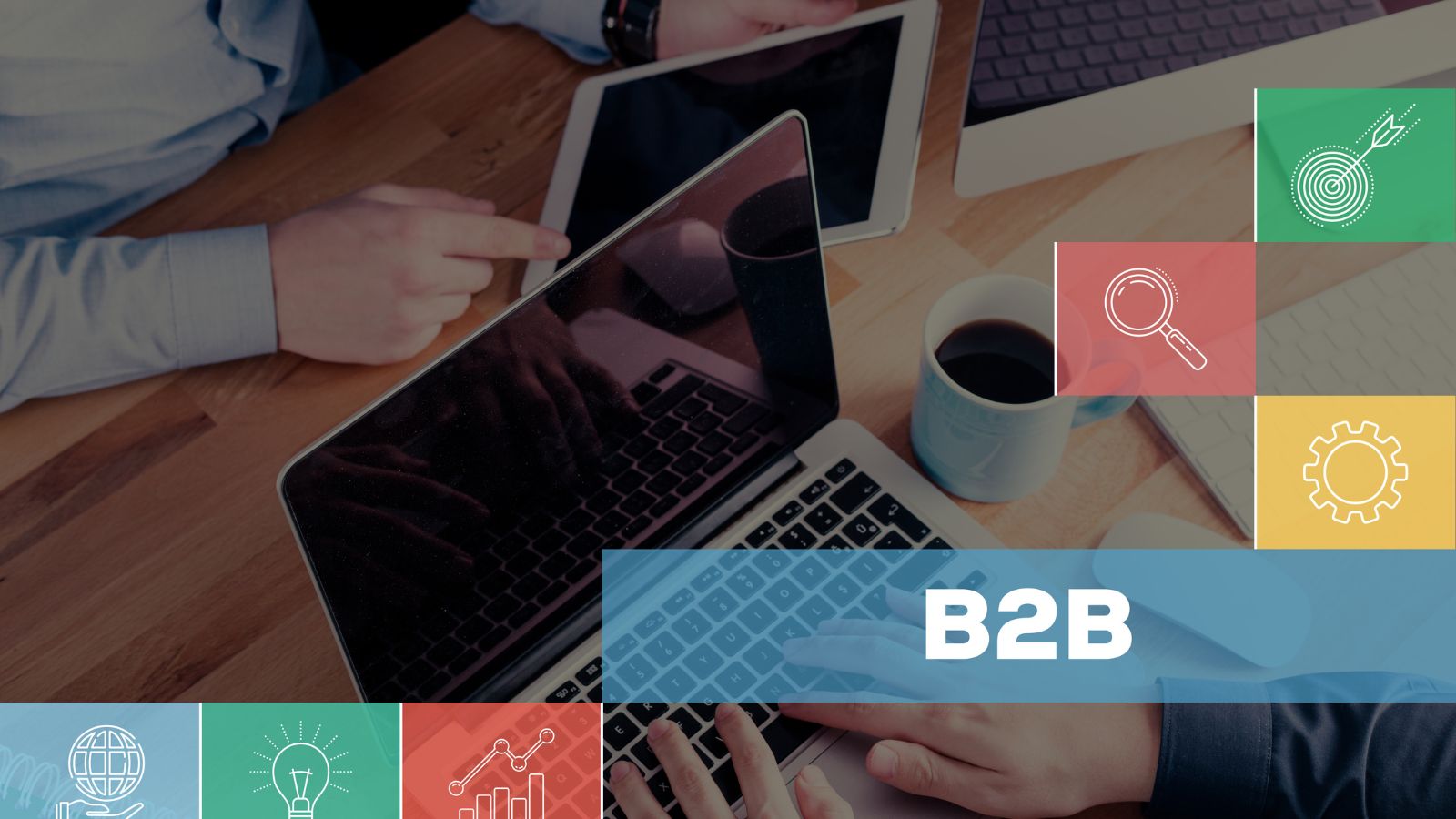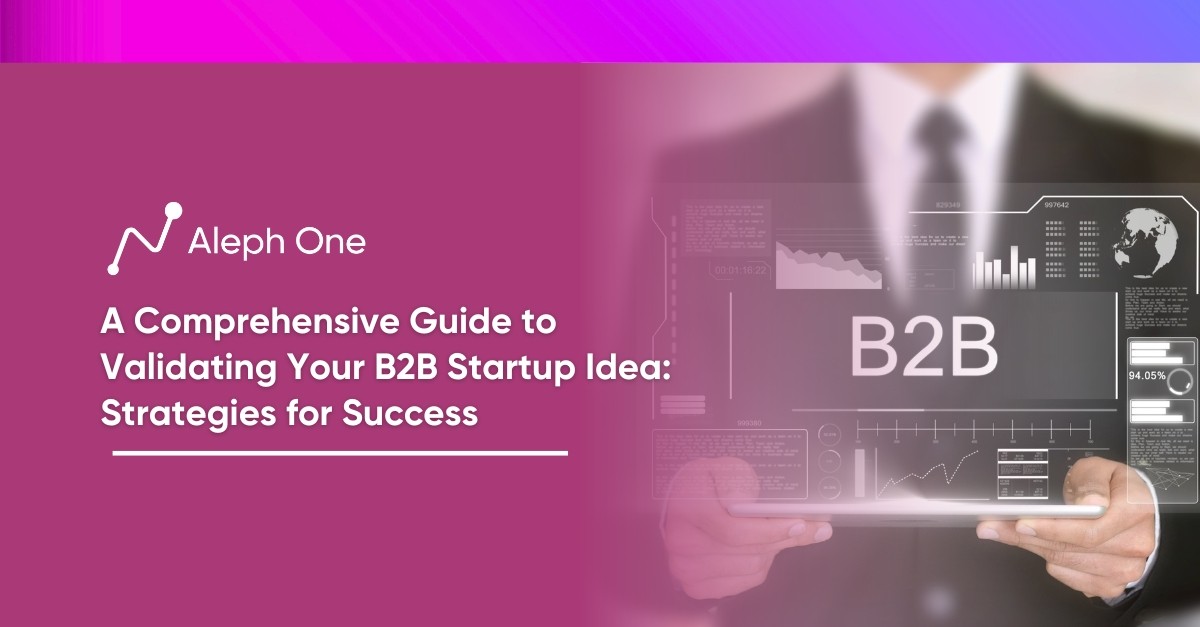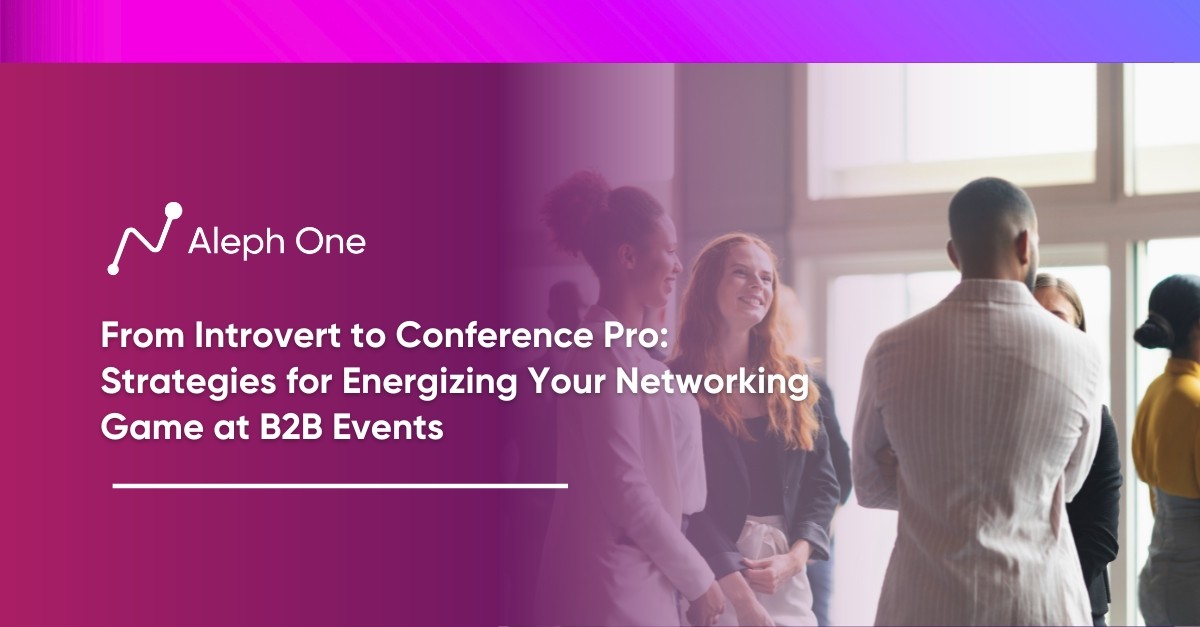Let’s work together to build something amazing. Share your project details and our team will reply to figure out the next steps to your success.

In B2B sales, poor lead qualification can be a costly mistake. With companies investing significant resources into digital marketing and generating many leads, separating the wheat from the chaff is essential. Studies show that less than a quarter of B2B leads convert into sales, indicating the urgent need for an effective lead qualification process. This article delves into the criticality of lead qualification and why it matters more than ever in today’s information-driven landscape. Businesses can significantly improve conversion rates, boost sales productivity, enhance customer lifetime value, and optimize their marketing return on investment by implementing a systematic approach to qualify leads. Discover the ultimate B2B lead qualification checklist and unlock the path to sales success.

The Criticality of Lead Qualification: Why It Matters More Than Ever
Poor lead qualification costs B2B companies millions of dollars annually in wasted time and resources. According to recent studies, sales reps spend over 40% of their time on unproductive prospecting, and the average B2B firm generates over 50% of their leads from digital marketing. Yet, less than 25% of those leads convert into sales.
Qualify Your Leads
To boost your sales productivity and success, you must focus on qualifying your leads to identify the most promising opportunities. Lead qualification helps you determine which leads are genuinely interested in your solution and have a high likelihood of becoming customers. By systematically qualifying all your leads against a consistent set of criteria, you can filter out poor-fit leads early on and pass only high-quality, sales-ready leads to your sales reps.
Impact of an Effective Lead Qualification Process
An effective lead qualification process has significant benefits for your business:
- Improved conversion rates. By eliminating poor-fit leads, you can achieve higher conversion rates from leads to sales. Studies show companies implementing lead qualification see up to a 70% increase in lead conversion.
- Increased sales rep productivity. With higher-quality leads, your sales reps spend less time on unproductive prospecting and more time closing deals. This can improve sales rep productivity by up to 25%.
- Better customer lifetime value. Qualified leads that convert into customers tend to have higher lifetime value. They are a better fit and more satisfied with your solution, leading to greater loyalty and repeat business.
- Improved marketing ROI. When you pass more high-quality leads to sales, it demonstrates the effectiveness of your marketing campaigns and justifies greater investment in lead generation. Lead qualification is key to optimizing your marketing ROI.
Lead qualification should be a priority for any B2B company looking to enhance sales productivity and success. With a rigorous lead qualification process, you can focus your sales efforts on the leads most likely to become your customers.
From Spray and Pray to Laser-Focused: How to Define Your Ideal Customer
To boost your lead qualification success, you must first identify your ideal customer profile through buyer personas and market segmentation. Many companies take a “spray and pray” approach by targeting anyone and everyone in hopes that some will convert. However, you can craft a laser-focused lead generation strategy by researching your most valuable customer segments.
Detailed Buyer Personas
Develop detailed buyer personas that represent your target customers. Analyze attributes like job titles, pain points, goals, and demographic information. The more specific you can get, the better. For example, instead of “marketing managers,” focus on “B2B SaaS marketing managers in the healthcare industry.”
Customer Cluster
You should also examine how your best customers cluster together regarding needs, behaviors, and attributes. This is known as market segmentation, allowing you to tailor your messaging and products to each group. For instance, you may have two different customer groups: 1) fast-growing healthcare startups looking to scale quickly and 2) established hospitals focused on improving operational efficiency.
Evaluate Current Leads and Contacts
With your ideal customer profiles defined, evaluate your current leads and contacts against these benchmarks. Don’t be afraid to disqualify those that do not match. One company found that 60% of their leads needed to fit their ideal criteria. By refocusing their efforts, they boosted lead quality by over 70% and productivity by over 50% within a year.
Marketing and Sales Teams
When your sales and marketing teams have a shared understanding of your target customers, they can align their strategies and tactics. Your marketing campaigns and content will resonate more deeply with the right buyers. And your sales reps will have an easier time qualifying leads since they know exactly what a good fit looks like.
Focusing on your ideal customers is the foundation for boosting your leads’ quality and conversion rates. With buyer personas and market segmentation, you gain valuable insights to laser-target your lead generation and nurturing efforts. The result is a higher ROI from your marketing and a more efficient, optimized sales process. By moving from “spray and pray” to laser-focused, you can improve lead qualification and sales success exponentially.
The 3 Levels of Lead Qualification: How to Categorize Your Leads
Not all leads are created equal. To make the most of your lead generation efforts, you need to categorize your leads into different levels of qualification. The three main levels are:
Marketing Qualified Leads (MQLs)
These leads have expressed interest in your company’s offerings through interactions like downloading an ebook, signing up for a webinar, or filling out a contact form. However, they are not yet ready to engage with a sales rep. To nurture MQLs, educate them with targeted content like blog posts, case studies, and newsletters. The goal is to build familiarity and trust to move them to the next level.
Sales Accepted Leads (SALs)
These leads clearly need your product or service and are open to an initial sales call. However, they require further qualifications before significant time is invested. To qualify SALs, sales reps should assess the lead’s budget, decision-making authority, and timeline for purchasing. Leads that meet the criteria can be progressed to SQLs. Those that do not can remain in the nurturing stage.
Sales Qualified Leads (SQLs)
These leads have been vetted by a sales rep and identified as a good fit and ready to pursue actively. They have a defined need for your offering, the ability to purchase, a reasonable buying timeframe, and are engaged in the buying process. SQLs should be prioritized for follow-up calls and demos. With the proper nurturing and sales techniques, many SQLs will convert into customers.
Using a tiered process to categorize leads based on their qualification and buying readiness allows you to customize your marketing and sales efforts for the best results. While all leads have potential, not all are worth the same investment of time and resources. By nurturing MQLs and SALs to move them to the next stage, you can focus your sales team’s efforts on the most promising SQLs, leading to higher conversion rates and faster sales cycles.
5 Must-Have Criteria to Qualify Your Leads
To effectively qualify your leads, you need to assess them based on a standardized set of criteria. Here are five must-have criteria to determine if a lead is sales-ready:
1. Authority
Does the lead have the authority to make a purchasing decision? Ask questions to determine if the lead is an influencer, evaluator, or decision-maker. Leads with decision-making power are more likely to convert into opportunities.
2. Need
Does the lead have a clear need for your product or solution? Ask open-ended questions to identify the lead’s key challenges, priorities, and requirements. Leads with an urgent or unmet need will be more motivated to take action. Studies show that over 50% of B2B buyers are more interested in solutions that address their key needs.
3. Funding
Does the lead have access to the budget and funding for purchase? Politely probe to determine if budget constraints or additional approvals are needed. While funding is not always essential at the early stages, it is a key factor in the final purchase decision. Research shows that lack of budget is a top reason for stalled or lost sales deals.
4. Timeline
What is the lead’s expected timeline for making a purchase? Ask questions to assess whether their need is immediate or the purchase is still months away. Leads with a shorter timeline to purchase will allow your sales team to prioritize their efforts on the most sales-ready opportunities.
5. Competition
Who else is the lead evaluating or currently using? Determine your key competitors to develop a clear competitive strategy for your opportunity. With insights into the lead’s alternatives, your sales team can focus on differentiating your solution and highlighting its benefits. Studies show that over 60% of B2B buyers will consider three or more competitors during their buying process.
By qualifying your leads based on these five criteria, you can identify the most promising leads for your sales team to pursue while nurturing the remaining leads for future opportunities. With a structured qualification process, companies have doubled their lead-to-opportunity conversion rates and boosted sales productivity by up to 30%.
Nurturing Your Leads: How to Build a Relationship that Lasts
Once you have leads in your pipeline, the work isn’t done. You need to nurture those leads by building a relationship of trust and helping them advance in their buying journey. Through targeted content and marketing, you can move leads closer to a sale.
Lead Scoring
One of the most effective lead nurturing strategies is lead scoring. This involves assigning points to leads based on attributes like job title, company size, and actions they take, like downloading a whitepaper. The higher the score, the more sales-ready the lead. You can then focus your outreach on the most promising leads. Research shows that companies that use lead-scoring systems experience a 10% or more increase in sales productivity.
Lead Nurturing Campaigns
Lead nurturing campaigns, like email drip campaigns, are also highly effective. You can tailor content to leads based on where they are in the buying process. For example, send an email on how to evaluate solutions to leads in the early stage. For leads closer to a purchase, send case studies of how other clients achieved success with your product. Campaigns that provide value at each stage can improve lead conversion rates by over 20%.
Account-based Marketing
Account-based marketing is another nurturing strategy that targets high-value accounts. You develop a customized campaign for key accounts, with content specific to their needs and challenges. This focused approach can generate up to 10 times more revenue than traditional lead generation tactics. An ABM campaign may include direct mail, email, phone calls, and in-person meetings. The multi-channel outreach helps build a relationship with the client and positions your company as a trusted partner.
An effective lead nurturing program will pay off through higher customer lifetime value. When you build a relationship with leads over time through helpful interactions, you establish loyalty and credibility. This means that once converted, customers will continue to turn to your company to meet their needs, increasing the revenue and profits from the account. Lead nurturing is a long game that results in maximum value.
A 5-Step Checklist to Qualify Your Leads
To boost your sales success, implement a standardized process for qualifying leads. Here is a 5-step checklist your sales reps can follow:
1. Verify the Lead’s Contact Information
Double-check that you have the lead’s correct name, title, phone number, and email address. Ask basic questions to confirm their role and authority in the buying process. If information needs to be included or corrected, request the details required to engage with the lead properly.
2. Identify the Lead’s Needs and Timeline
Ask open-ended questions to determine what the lead wants to achieve or their pain points. Find out when they are looking to get started or make a purchase. Leads with a pressing need or short timeline may be good candidates for a quick qualification call. Set a reminder to follow up at the appropriate time for longer timelines.
3. Evaluate the Lead’s Budget
Politely ask the lead about their budget for the desired solution. While budget is not always the most important factor, it provides context on the scale of options to discuss. If budget is a constraint, you may need to explore more affordable alternatives or find ways to phase a larger implementation.
4. Assess competitors in the mix
Inquire if the lead is evaluating any other options or vendors. Try to determine how far along they are in the process with competitors and what your solution’s advantages are in comparison. Knowing the competitive landscape helps craft a compelling pitch to qualify and win the lead.
5. Determine the Next Steps
Decide whether the lead meets your qualification criteria based on the information gathered. If qualified, schedule a product demo or discovery call. If not yet qualified, set a follow-up plan to nurture the lead with useful content and education. Your next conversation should aim to re-assess their needs and move them closer to a sale.
With a standardized 5-step process, sales reps can methodically qualify leads and accelerate deal closure. An efficient and consistent qualification checklist is vital to boosting your B2B sales success.
Get the latest news and updates from Aleph One in your inbox.



